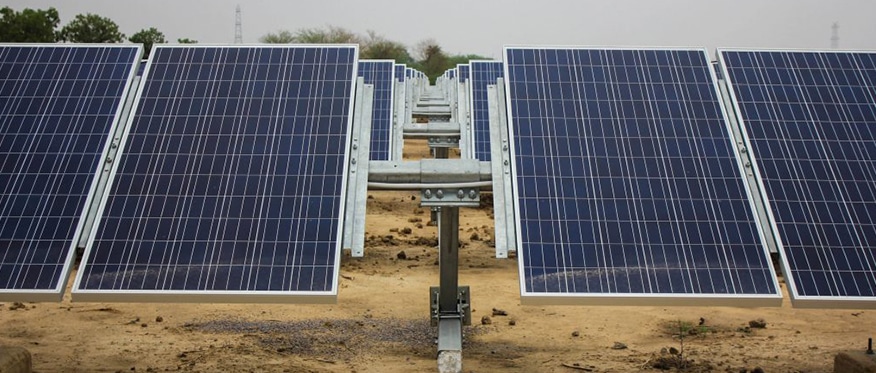Maximise Solar Energy Output with Solar Trackers
CleanMax January 16, 2017 | Monday

A fixed tilt solar power plant installation is typically stationary, and this is a challenge as the Sun isn’t stationary. It reduces the overall efficiency of power generation as some amount of useful solar energy is lost in the environment. Solar trackers help maximise generation by 15-20% by following the path of the sun thereby increasing exposure time of the solar modules.
The Working of Solar Trackers
Solar modules have best generation when sunlight falls perpendicularly on them, leading to lesser wastage of irradiation. Trackers ensure that modules are facing the sun for most part of the day. Throughout the day, trackers change the orientation of the solar modules to maximise energy capture.The Different Types of Solar Trackers
- Passive Trackers: Passive trackers use a low boiling point compressed gas fluid that is driven to one side or the other (by solar heat creating gas pressure) to cause the tracker to move in response to an imbalance. As this is a non-precision orientation, it is unsuitable for certain types of concentrating photovoltaic collectors, but works fine for common PV panel types.
- Active Trackers: Active trackers use motors and gear trains to direct the tracker as commanded by a controller, responding to the solar direction. These are the most common type of trackers, and are used widely. These are further classified into Single Axis and Dual Axis Trackers.
- Single Axis trackers: Single axis trackers have one degree of freedom that acts as an axis of rotation. The axis of rotation of single axis trackers is typically aligned along a true North meridian. It is possible to align them in any cardinal direction with advanced tracking algorithms. There are several common implementations of single axis trackers. These include Horizontal Single Axis Trackers (HSAT), Vertical Single Axis Trackers (VSAT), Tilted Single Axis Trackers (TSAT) and Polar Aligned Single Axis Trackers (PSAT).
![]()
- Dual Axis Trackers: Dual axis trackers have two degrees of freedom that act as axes of rotation. These axes are typically normal to one another. The axis that is fixed with respect to the ground can be considered a primary axis. The axis that is referenced to the primary axis can be considered a secondary axis. There are several common implementations of dual axis trackers. They are classified by the orientation of their primary axes with respect to the ground. Two common implementations are Tip-Tilt Dual Axis Trackers (TTDAT) and Azimuth-Altitude Dual Axis Trackers (AADAT). Dual axis trackers are typically used in smaller residential installations and locations with very high government Feed In Tariffs.
![]()
Advantages of a Solar Tracker, Despite Its High Costs
Even though Solar trackers have a high set up and maintenance costs, the higher efficiency well justifies the additional costs depending upon the latitude and longitude of the site. The truth is that solar trackers generate more electricity in roughly the same amount of space needed for a tilt system. These benefits make solar trackers a great fit for large ground-mount sites.When can they be used?
Ideally, trackers should be a part of ground mount solar systems. They are best suited for ground mount systems, as they can be set up on any barren land inside the premises, and can also be manually adjusted if required when there is a change in climate.If you’d prefer a rooftop system, then you need to keep in mind that solar trackers cannot be installed on roofs in general. A structural strength evaluation needs to be made to correctly assess feasibility of installation.
The case study included below further helps to illustrate the benefits of using solar trackers to enhance solar energy output.